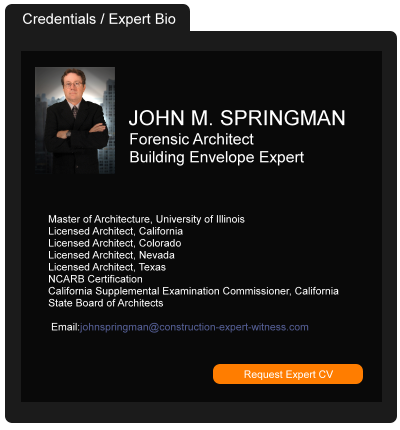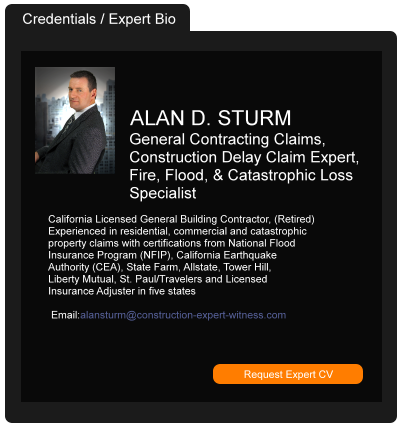LEED Certified Courthouse Square Negotiating With Insurers, Mulling Over Demolition
June 06, 2011 —
Douglas Reiser, Builders Council BlogApparently, Courthouse Square is still unresolved. The County hasnow hired an attorney to handle its insurance claim against Affiliated FM. Is there a lawsuit coming?
�Right now, no lawsuit is expected. According to officials, the insurer has been acting in good faith. But, its been quite a while since Salem officials learned that the Courthouse Square building had significant concrete issues that would result in probable demolition of the LEED certified building.
�If you have yet to hear about Courthouse Square, let me fill you in briefly. The Salem building was substantially completed in 2000 and LEED certified by the US Green Building Council in 2002. The project cost more than $30 Million to complete and the building was revered for its innovation as a crowning achievement for city leaders.
�But, structural problems in the building’s core were discovered as early as 2002, writes Chris Cheatham of Green Building Law Update. Final tests earlier in the year, determined that the building had to be vacated. The building has been clear since July 2010.
�Read the full story…
� �Reprinted courtesy of Douglas Reiser of Reiser Legal LLC. Mr. Reiser can be contacted at info@reiserlegal.com
Read the court decisionRead the full story...Reprinted courtesy of
VOSH Jumps Into the Employee Misclassification Pool
February 23, 2016 —
Christopher G. Hill – Construction Law MusingsThe proper classification of workers by construction companies has been on the radar of the Department of Labor for both the US and Virginia governments for quite a while. While most of the misclassification is innocent and not done to create issues, there have been enough instances of purposeful misclassification of certain workers as independent contractors (thus avoiding workers comp and other payroll expenses) that innocent contractors have born the brunt of these issues through increased payroll costs over those that misclassify (in the form of necessarily higher bids, higher overhead, etc.).
As an additional deterrent to improper classification of workers, the Virginia Department of Labor and Industry has issued guidelines for what will occur in Virginia Department of Safety and Health (VOSH) cases.
Read the court decisionRead the full story...Reprinted courtesy of
Christopher G. Hill, Law Office of Christopher G. Hill, PCMr. Hill may be contacted at
chrisghill@constructionlawva.com
What is a Personal Injury?
September 03, 2019 —
Bremer Whyte Brown & O'Meara LLPEssentially, a personal injury is when an individual is hurt during an accident. Whether driving on the road, walking down the street, or sitting in a chair, accidents happen. When there is an accident, medical treatment may be necessary. Individuals who sustain injuries usually seek compensation for their medical treatment and pain and suffering in the form of a personal injury lawsuit.
Personal injury lawsuits can result from a variety of claims including negligence, strict liability, or intentional torts. Yet, for the most part, personal injury lawsuits tend to arise from a claim of negligence. The individual or entity injured in the accident, “Plaintiff”, files a lawsuit against the individual or entity, “Defendant” who allegedly caused harm. Personal injury lawsuits resulting from claims of negligence tend to have two main components: liability and damages. Yet, in order to prevail in a suit for negligence, a Plaintiff must demonstrate the following: (1) a legal duty to use due care, (2) a breach of that duty, (3) a reasonably close, causal connection between that breach and Plaintiff’s resulting injury, and (4) actual loss or damage to Plaintiff. Wylie v. Gresch (1987) 191 Cal.App.3d 412.
First, a finding of negligence rests upon a determination that the actor has failed to perform a duty of care owed to the injured party. Ronald S. v. County of San Diego (1993) 16 Cal.App.4th 887. This means that an individual or entity must act reasonably to avoid injuring others. When an injury occurs, a Plaintiff will generally argue that an individual or entity breached a duty owed to them.
Read the court decisionRead the full story...Reprinted courtesy of
Bremer Whyte Brown & O'Meara LLP
The “Unavailability Exception” is Unavailable to Policyholders, According to New York Court of Appeals
September 10, 2018 —
William S. Bennett & Warsame Y. Hassan - Saxe Doernberger & Vita, P.C.The New York Court of Appeals recently upheld a prior appellate division decision finding that policyholders facing environmental claims, spanning multiple years, cannot force their insurers partially on the risk to provide coverage for years where the insurers did not issue policies, even though pollution insurance was unavailable in the marketplace.
In Keyspan Gas E. Corp. v. Munich Reins. Am., Keyspan Gas East Corporation (“Keyspan”) argued other insurers should cover the period when pollution property insurance was unavailable in the marketplace, according to their pro-rata share of coverage. 31 N.Y.3d 51 (2018). In a unanimous decision, the Court emphasized the Appellate Division’s prior ruling that stated, “spreading risk should not by itself serve as a legal basis for providing free insurance to an insured.”
Read the court decisionRead the full story...Reprinted courtesy of
William S. Bennett, Saxe Doernberger & Vita, P.C.Mr. Bennett may be contacted at
wsb@sdvlaw.com
Constructive Notice Established as Obstacle to Relation Back Doctrine
March 01, 2021 —
Nicholas B. Brummel & Lawrence S. Zucker II - Haight Brown & Bonesteel LLPIn Organizacion Comunidad de Alviso v. City of San Jose, the Sixth Appellate District held that the relation back doctrine was inapplicable where a plaintiff received constructive notice of a defendant’s identity months prior to the last date where filing was permitted pursuant to an applicable statute of limitations.
In Organizacion Comunidad de Alviso, Mark Espinoza, an Organizacion Comunidad de Alviso (OCA/Plaintiff) representative, asked the City of San Jose (“the city”) to place him on the public notice list for a proposed rezoning project. He also twice specifically requested a copy of the notice of determination (NOD) documenting the city’s certification of an environmental impact report (EIR) and approval of the project. Despite Espinoza diligently requesting all notices for the project, the city, in violation of the California Environmental Quality Act (CEQA), failed to send Espinoza the legally operative second NOD for the project; the first NOD was provided to OCA, but named an incorrect party in interest.
Reprinted courtesy of
Nicholas B. Brummel, Haight Brown & Bonesteel LLP and
Lawrence S. Zucker II, Haight Brown & Bonesteel LLP
Mr. Brummel may be contacted at nbrummel@hbblaw.com
Mr. Zucker may be contacted at lzucker@hbblaw.com
Read the court decisionRead the full story...Reprinted courtesy of
#4 CDJ Topic: Vita Planning and Landscape Architecture, Inc. v. HKS Architects, Inc.
December 30, 2015 —
Beverley BevenFlorez-CDJ STAFFIn the above mentioned case, a Texas architectural firm (HKS Architects, Inc.) hired a California design firm (Vita Planning and Landscape Architecture, Inc.) as a sub-consultant, according to
Garret Murai of
Wendel Rosen Black & Dean LLP in a post on his
California Construction Law Blog. After Vita filed a complaint in California against HKS, HKS filed a motion to dismiss on the grounds that the landscape design contract included a “Texas forum selection clause.” The court found in favor of Vita, stating that “section 410.42 precludes enforcement of the forum selection clause requiring Vita to litigate its dispute against HKS in Texas.”
Read the full story...
In their article, “Court of Appeal Opens Pandora’s Box on Definition of ‘Contractor’ for Forum Selection Clauses,”
Haight Brown & Bonesteel LLP attorneys
Abigail E. Lighthart and
David A. Harris also analyzed the Vita case: “The Vita ruling expands the protections by Section 410.42 beyond traditional ‘builders’ to design professionals and architects who do not actually ‘build’ a project. What remains to be seen is whether other courts will take the expansion to cover other groups that are in any way involved in a construction project.”
Read the full story...
Read the court decisionRead the full story...Reprinted courtesy of
California Complex Civil Litigation Superior Court Panels
December 31, 2014 —
Richard H. Glucksman, Esq., Jon A. Turigliatto, Esq., and David A. Napper, Esq. – Chapman Glucksman Dean Roeb & Barger BulletinThe Complex Civil Litigation Program is relatively new as it has only existed in California
since 2000. Complex divisions dedicate courtrooms solely for litigation of complex civil
cases that require exceptional judicial management including construction defects, antitrust,
securities, toxic torts, mass torts, and class actions. Complex civil courtrooms help the trial
court operate in a more efficient, expeditious, and effective manner. A complex court
reduces costs for litigants by streamlining motion practice and expeditiously resolving
discovery disputes.
Not all counties have dedicated complex civil divisions. For those that do, each county has
its own local rules, and some complex divisions have their own particular set of rules. The
Judicial management of complex cases begins early, and is applied continuously and actively
with the idea that final resolution be expedited as much as possible. In focusing on
cooperation amongst the parties to achieve these goals, often requiring joint statements to
the court and a prohibition on discovery motions until after the parties have formally metand-
conferred on the issues. Moreover, complex cases are centralized and are assigned to
one highly skilled Judge for all purposes.
The first six California counties to create a Complex Civil division include Alameda, Contra
Costa, Los Angeles, Orange, San Francisco, and Santa Clara. Riverside County Superior
Court is the most recent California County to add a Complex division, effective January 2015.
Riverside county Superior Court’s Complex department consists of ten civil judges, seven of
which are in the main courthouse with Riverside. Riverside county expects to consolidate all
complex civil litigation into one courtroom by January 2015. Riverside county Judge Sharon
Waters state that "[i]t's been something that I personally have felt has been long overdue"
and that "[t]he idea is that put it with one judge and let him or her develop the expertise."
Judge Waters believes "[t]he potential value of establishing a complex litigation courtroom
[is that] it allows the judge to focus on the cases full time."1
As of October 2014, Riverside county had about 450 to 500 pending cases designated as
complex, over fifty percent (50%) of which involved construction defect matters. The sole
Judge who will preside over the complex cases has not yet been named.
1 Jolly, Vik. "Riverside to Shift Complex Civil Cases to 1 Courtroom." Los Angeles Daily Journal (October 13,
2014)
Reprinted courtesy of Chapman Glucksman Dean Roeb & Barger attorneys
Richard H. Glucksman,
Jon A. Turigliatto and
David A. Napper
Mr. Glucksman may be contacted at rglucksman@cgdrblaw.com;
Mr. Turigliatto may be contacted at jturigliatto@cgdrblaw.com;
and Mr. Napper may be contacted at dnapper@cgdrblaw.com
Read the court decisionRead the full story...Reprinted courtesy of
Kahana Feld Partner Noelle Natoli Named President of Women Lawyers Association of Los Angeles
October 07, 2024 —
Linda Carter - Kahana FeldLOS ANGELES – Sep. 16, 2024 – Kahana Feld is pleased to announce that partner Noelle Natoli was recently installed as the 2024-25 president of the Women Lawyers Association of Los Angeles (WLALA).
The mission of WLALA is to promote the full participation in the legal profession of women lawyers and judges from diverse perspectives and backgrounds, maintain the integrity of our legal system by advocating principles of fairness and equality, and improve the status of women by supporting their exercise of equal rights.
Natoli is a partner based in Kahana Feld’s Los Angeles office and focuses her civil trial practice on the defense of both insurers and insureds primarily in the areas of elder abuse, transportation defense, and general liability. Her clients include individuals, family-owned businesses, and national corporations. Natoli also chairs the Diversity & Inclusion Committee for the Trucking Industry Defense Association and serves as a board member of the National Conference of Women’s Bar Associations.
Read the court decisionRead the full story...Reprinted courtesy of
Linda Carter, Kahana FeldMs. Carter may be contacted at
lcarter@kahanafeld.com


































































